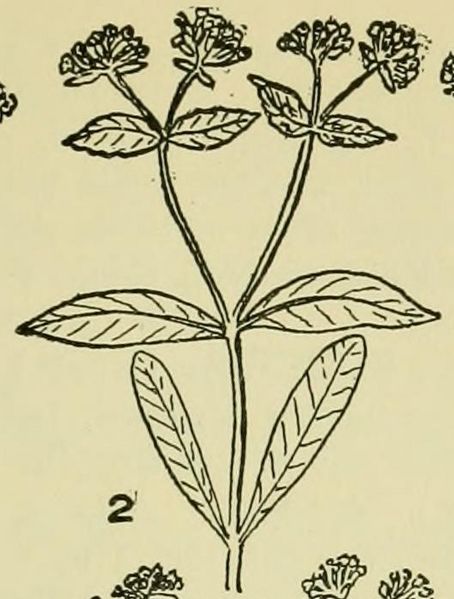Image: Valerianella chenopodifolia (14782992685)

Description: Identifier: illustratedguide00stev Title: An illustrated guide to the flowering plants of the middle Atlantic and New England states (excepting the grasses and sedges) the descriptive text written in familiar language Year: 1910 (1910s) Authors: Stevens, George T. (George Thomas), 1832-1921 Subjects: Plants Publisher: New York, Dodd, Mead and company Contributing Library: The LuEsther T Mertz Library, the New York Botanical Garden Digitizing Sponsor: The LuEsther T Mertz Library, the New York Botanical Garden View Book Page: Book Viewer About This Book: Catalog Entry View All Images: All Images From Book Click here to view book online to see this illustration in context in a browseable online version of this book. Text Appearing Before Image: ens egg, the head arisingabove an involucre of long linear prickly bracts which rise around thehead nearly to the level of its summit. Flowers lilac, each surrounded atits base by a prickly scale (an involuccl). Stamens 4. The two speciesfound in our area have been introduced from Europe, largely originatingabout woolen mills. The ripe teasel heads are, in Europe, used in theprocess of carding wool. 1. D. sylvestris, Huds. (Fig. 7, pi. 158.) Wild Teasel. Stemerect, stiff, 3 to G ft. high, with many prickles. Leaves without leaf-stalks, the lower oblong, sometimes lobed, 8 to 12 in. long, the upper lance-shaped, united about the stem. Bracts longer than the flower heads.Waste places. July-Sept. 2. D. lacinatus, L. Cut-leaved Teasel. Leaves once or twicefeather-compound. Established at Albany, N. Y. (C. H. Peck.) 2. KNAUTIA, L. Herbs with opposite leaves and flowers in dense heads, subtended by aBeveral-bracted involucre, the flowers arising from a flattened receptacle TEASEL FAMILY 603 Text Appearing After Image: Plate 158 1. Valerianella locusta. 2. V. chenopodifolia. 3. V. radiata. 4. V. woodsiana. 5. Knautia arvensis. 6. Succisa australis. 7- Dipsacus sylvestris. 604 CUCURBITACEAE without chaff. Calyx border consisting of 8 bristle points. Corolla 4- or5-lobed. Stamens 4 (rarely 2). Naturalized from Europe. K. arvensis, (L.) T. Coulter. (Fig. 5, pi. 158.) Field Scabious.Stem 1 to 3 ft. high, erect, slender, little branched. Lower leaves lance-shaped, on long leaf-stalks, often lobed on each side. Upper leaves with-out leaf-stalks, deeply lobed on each side. Flowers lilac purple. 3. SUCCISA, (Rupp.) Neck. Rather tall herbs, resembling Knautia, but the flattened receptacle isdecidedly chaffy, tlie chaff about equalling the flowers. S. australis, (Wulf.) Reichenb. (Fig. 6, pi. 158.) Southern Scab-ious. Stem usually dividing into 3s, 1 to 3 ft. high, rather hairy withshort or stiff reflexed hairs. Leaves lance-sliaped, borders not lobed ornotched. Heads of flowers about ^ in. in diameter. Caly Note About Images Please note that these images are extracted from scanned page images that may have been digitally enhanced for readability - coloration and appearance of these illustrations may not perfectly resemble the original work.
Title: Valerianella chenopodifolia (14782992685)
Credit: Image from page 620 of "An illustrated guide to the flowering plants of the middle Atlantic and New England states (excepting the grasses and sedges) the descriptive text written in familiar language" (1910)
Author: Internet Archive Book Images
Permission: Internet Archive Book Images @ Flickr Commons
Usage Terms: Public domain
License: Public domain
Attribution Required?: No
Image usage
The following page links to this image:

